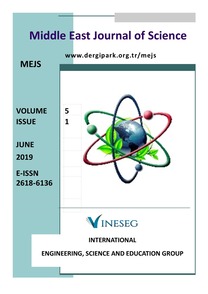INVESTIGATION OF FORCE AND MOMENT EFFECT OF ST 37 AND ST 70 ROOF LATTICE STEELS IN ANSYS PROGRAM
INVESTIGATION OF FORCE AND MOMENT EFFECT OF ST 37 AND ST 70 ROOF LATTICE STEELS IN ANSYS PROGRAM
St 37- St 70 Ansys, Force and moment, Finite element method,
___
- References[1] Bebon International co.,ltd., http://www.steel-plate-sheet.com/Steel-plate/DIN/St372.html.[2] Join-Win Steel, http://www.steel-jw.com/DINEN/ST702-structure-steel-with-competitive-price.html.[3] Simscale Blog-Finite Element Method, https://www.simscale.com/blog/2016/10/what-is-finite-element-method/[4] Rottensteiner, F., Sohn, G., Gerke, M., Wegner, J.D., Breitkopf, U., Jung, J. (2014). Results of the ISPRS benchmark on urban object detection and 3d building reconstruction, ISPRS J. Photogram. Remote Sens., 93, pp. 256-271, 10.1016/j.isprsjprs.2013.10.004. [5] Jochem, A., Höfle, B., Rutzinger, M., Pfeifer, N. (2009). Automatic roof plane detection and analysis in airborne LiDAR point clouds for solar potential assessment, Sensors, 9, pp. 5241-5262, 10.3390/s90705241. [6] Huang, H., Brenner, C., Sester, M. (2013). A generative statistical approach to automatic 3D building roof reconstruction from laser scanning data, ISPRS J. Photogram. Remote Sens., 79, pp. 29-43, 10.1016/j.isprsjprs.2013.02.004. [7] Vitti, A. (2012). The Mumford-Shah variational model for image segmentation: an overview of the theory, implementation and use, ISPRS J. Photogram. Remote Sens., 69, pp. 50-64, 10.1016/j.isprsjprs.2012.02.005. [8] Blake, A., Zisserman, A. (1987). Visual Reconstruction, MIT Press. [9] Ohtake, Y., Belyaev, A., Seidel, H.P. (2004). Ridge-valley lines on meshes via implicit surface fitting, ACM Trans. Graph., 23, pp. 609-612, 10.1145/1015706.1015768.[10] Rottensteiner, F. (2003). Automatic generation of high-quality building models from LiDAR data, IEEE Comput. Graphics Appl., 23, pp. 42-50, 10.1109/MCG.2003.1242381.[11] Wang, Y., Hao, W., Ning, X., Zhao, M., Zhang J., Shi, Z., Zhang, X. (2013). Automatic segmentation of urban point clouds based on the gaussian map, Photogram. Rec., 28, pp. 342-361, 10.1111/phor.12041.[12] Taşkaya S. (2017). Investıgatıon of mechanical stresses dependent on press in St 37 steel Ansys program, The Journal of International Manufacturing and Production Technologies (JIMPOT), 1, pp. 39-46.[13] China steel suppliers, http://www.steelgr.com/Steel-Grades/Carbon-Steel/st70-2.html.
- ISSN: 2618-6136
- Yayın Aralığı: 2
- Başlangıç: 2015
- Yayıncı: -
INVESTIGATION OF FORCE AND MOMENT EFFECT OF ST 37 AND ST 70 ROOF LATTICE STEELS IN ANSYS PROGRAM
Bilgin ZENGİN, Semih TAŞKAYA, Kürşat KAYMAZ
AB-INITIO CALCULATIONS OF STRUCTURAL, ELECTRONIC AND MAGNETIC PROPERTIES OF LiRh2Si2
Gülten KAVAK BALCI, Seyfettin AYHAN
INVESTIGATION OF TEMPERATURE DEPENDENCE OF D2O SOLUTIONS BY 400 MHZ NMR
Gülten KAVAK BALCI, Canan AYTUĞ AVA, Ali YILMAZ
AN EXAMPLE TO THE CHANGE OF EARTH SHAPE: EVIDENCE OF TETHYS SEA IN DİYARBAKIR
STABILITY ANALYSIS FOR THE KAWACHARA AND MODIFIED KAWACHARA EQUATIONS
A RESEARCH ON PRODUCTION POTENTIAL OF FRUITS GROWN ON KARS PROVINCE
